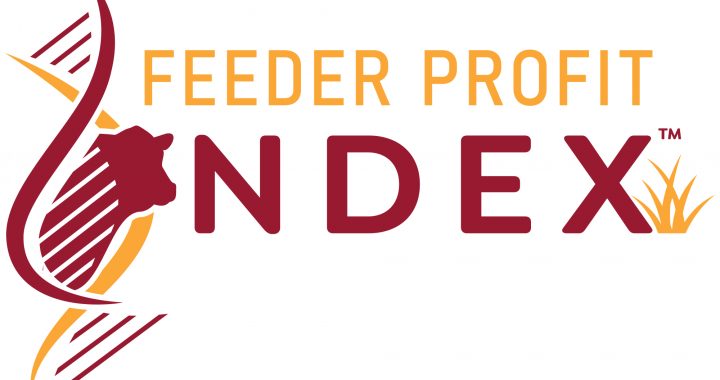Canada must have a plan to protect and invest in our agri-food systems so that it can be economically beneficial and sustainable in the long term. For that to happen, the right policies must be put in place, backed by strategic thinking, a systems approach, and supported by strong public-private partnerships and aspirational leadership. The Canadian Agri-Food Policy Institute brought together its 4 Distinguished Fellows (of whom Gentec-associated researcher Ellen Goddard is one) in a webinar, which we summarize for you below.
The idea behind CAPI’s Distinguished Fellows program is for these key thought leaders to collaborate over the coming year on issues important to agriculture (trade, one health, water and climate change) that lead to innovative policy thinking.
SUBHEAD As you look to build the framework for One Health and what that means in Canada, how is COVID a One-Health issue, and how does it relate to anti-microbial resistance (AM) and African swine fever?
Ellen Goddard: The important thing that happened in the past 18 months is science. Not just vaccines but many topics that spill over so, globally, we’re ahead of where we were before COVID. The spillover will start to emerge after the extreme phases.
Overall, I’d like to see a higher profile for the potential of these diseases. Agri-Food and Agriculture Canada (AAFC) has a core role to play in facilitating the national response to these diseases and to zoonoses. We understand these pathways exist but their study is compartmentalized, and we’re not consistent in our approaches when they interact between people and animals. At that point, it isn’t even clear which ministry is in charge. Could be the Ministry of the Environment or Natural Resources for wildlife, or AAFC or the Canadian Food Inspection Agency for livestock. And the Public Health Agency of Canada often doesn’t participate.
Canada has been lucky with AMR compared to European countries that are dramatically reducing their use of antimicrobials in livestock production because the development of AMR bacteria is affecting human health. We need to knock that on the head soon. All these challenges need to be facilitated through a federal ministry that interacts with other ministries and leads the provinces in terms of these actions.
SUBHEAD Climate and health were well-featured in the campaign, as was the debate and impact of carbon tax, exemptions for farmers, etc. What do you think governments are getting right and wrong?
Susan Wood-Bohm. That this government is continuing not restructuring gives us the opportunity to evaluate past performance and see what’s in front of us. The key document I focus on is the Pan Canadian Framework on Clean Growth and Climate Change. It shows that this government intends to link the post-COVID economic recovery to climate change, and what we can do to serve climate change goals and economic goals. The document is sound. The difficulty is that it isn’t fleshed out. Some programs have rolled out but we only tend to hear about them if they pertain to climate change, not agriculture. Part of that problem is that government doesn’t speak the language of agriculture, which is very important to the economy, so I’d say learn that language and understand that agriculture is a viable and economic force in this country, and a natural force to deal with climate change.
The Framework document has an annex that shows the government’s intention to reduce emissions from agriculture and look at what agriculture can to do help us address climate change goals. But again, it’s a framework document. It hasn’t been fleshed out. There haven’t been real actions. So going forward, we’re looking for real action—with producer organizations and producers. We need to hear their voices.
SUBHEAD. We didn’t hear anything about water during the campaign. We can expect droughts on the Prairies and too much rain in Eastern Canada. Water plays a role in attracting food processing to Canada. How do you see the dialogue around water policy playing out over the next four years? Will issues on the horizon focus attention on water?
Nicolas Mesly. Water will be THE issue of the 21st century. Canada has 17% of the world’s fresh water. When we export agricultural products—and we’re the fifth largest exporter in the world—we’re also exporting water. One issue to analyze is how provincial rules complement each other or interfere, and how that affects producers. Another issue is how fracking affects the water table and producers. We’ll also be looking at whether water is a commodity and should be subject to tariffs when it is exported. If we are in a resilient agri-food system, we will need water policies and management, and to conserve water. I look forward to working with CAPI on these issues.
SUBHEAD. Commentators noted that no attention was paid to foreign affairs and trade on the campaign trail—while Afghanistan was on fire. Canada is also left out of a new security partnership. The changing international landscape will reshape our foreign affairs strategy. How does agri-food fit in?
Ted Bilyea. The other panelists outlined a strategic position for Canada. We have an abundance of raw materials, particularly food, energy and minerals. The world can be as brilliant as it wants but it can’t live without these basics. My concern is that we have a potentially winning hand but we don’t know how to play our cards very well. That’s what I’ll be focusing on this year.
Canada has a reputation for high animal health that allows us to enter any market. In some cases, it’s worth $1/kg. Similarly, our crops are low-residue so can also go to high premium markets. Now we are moving into a world where climate change, water play a role. Countries have to meet the commitments they are making. And we see already that will cut production, significantly. Look at the EU. The same is happening in China. Most people haven’t spotted that we’re shipping fewer soybeans than expected, partly because the swine industry has some issues but there’s also not enough electricity to run plants because of carbon commitments. We’re in a new world where we don’t recognize the hand we have. As Nicolas was saying, countries are forced to divert water from agriculture to cities and even to preserve biodiversity, some close to home. That and the fact that you can only have certain animal density before you’re guaranteed a disease and you’re going to have more coming. All of those suggest we should be thinking more strategically about how we play with trade policy. The possibilities are significant where we could gain leverage and use it for good—not just to make money — to have a more sustainable, peaceful world.
SUBHEAD. If you were Trudeau writing a mandate letter to the new Minister for AAFC, What would you say is Job #1?
Ellen Goddard. We can’t stop people, animals or food from moving around the planet. If we don’t address these issues seriously, we can’t guarantee the quality of Canadian products. A lot of disease issues are flowing under people’s agendas, so I’d say develop a one-health policy that will guarantee the quality of Canadian food exports.
Susan Wood-Bohm. In 2017, the government released the Barton Report on the potential for agriculture to lead an economic recovery for Canada. It’s interesting that we’re now in a position where we have a significant economic recovery to address. The report suggested we could lead the recovery by responding to the needs of the global market, and that includes COVID, by addressing increasing protein demands and developing partners. That seems awfully relevant today. So, I hope the letter says: we have this report, it’s a good one. Get on with delivering it and look after issues like access to capital for producers.
Nicolas Mesly. AAFC is asking producers to increase organic matter in soil as a strategy to mitigate climate change. It’s driven by corn and soya pumping out the organic matter. Another thing has been the $40 billion of Trump money to buy farmers’ votes that’s being invested in US farms. We don’t have the same envelope or programs to protect our revenue. American producers are doing well. Our system works when prices are low. The forest is hiding the trees. China is pulling prices up so we have to think competitively. We need to play our cards right. It’s an opportunity but we have to discuss all the issues with the public and farmers.
Ted Bilyea. We need to up our game from cards to chess, so less whackamole. It’s that important. I agree with the speakers. I’d like to see AAFC place more emphasis on the strategic importance of agriculture on our health, economy, climate and so many other important files. It will have to lead on some of those files as well as just doing. And we need a shift in shared responsibility between federal and provincial governments from firefighting to more action and foresight and joint strategic planning. We might start with reactivating the outlook conference where we share knowledge with industry. CAPI will be good for that. It might be an avenue to take the outlook conference out of government and bring it to neutral ground.
As for competitiveness and innovation, it was left out of the campaign but it’s critical. The developed world has seen significant decline in R&D in agriculture. Government R&D has declined in that sphere and, in Canada, business investment in R&D has declined as well. But in developing nations, Brazil, China, the business portion has increased. So, we are seeing others take on the more interesting R&D portfolios, partly because we’re not good at commercializing. Canada was built on firsts: William Davies built Canadian Packers, imported the first genetics and we became world leaders in genetics for pigs and cattle. We need R&D productivity to race ahead but we won’t get there until government and business collaborate on R&D research.
Watch/listen to the entire webinar here.









